
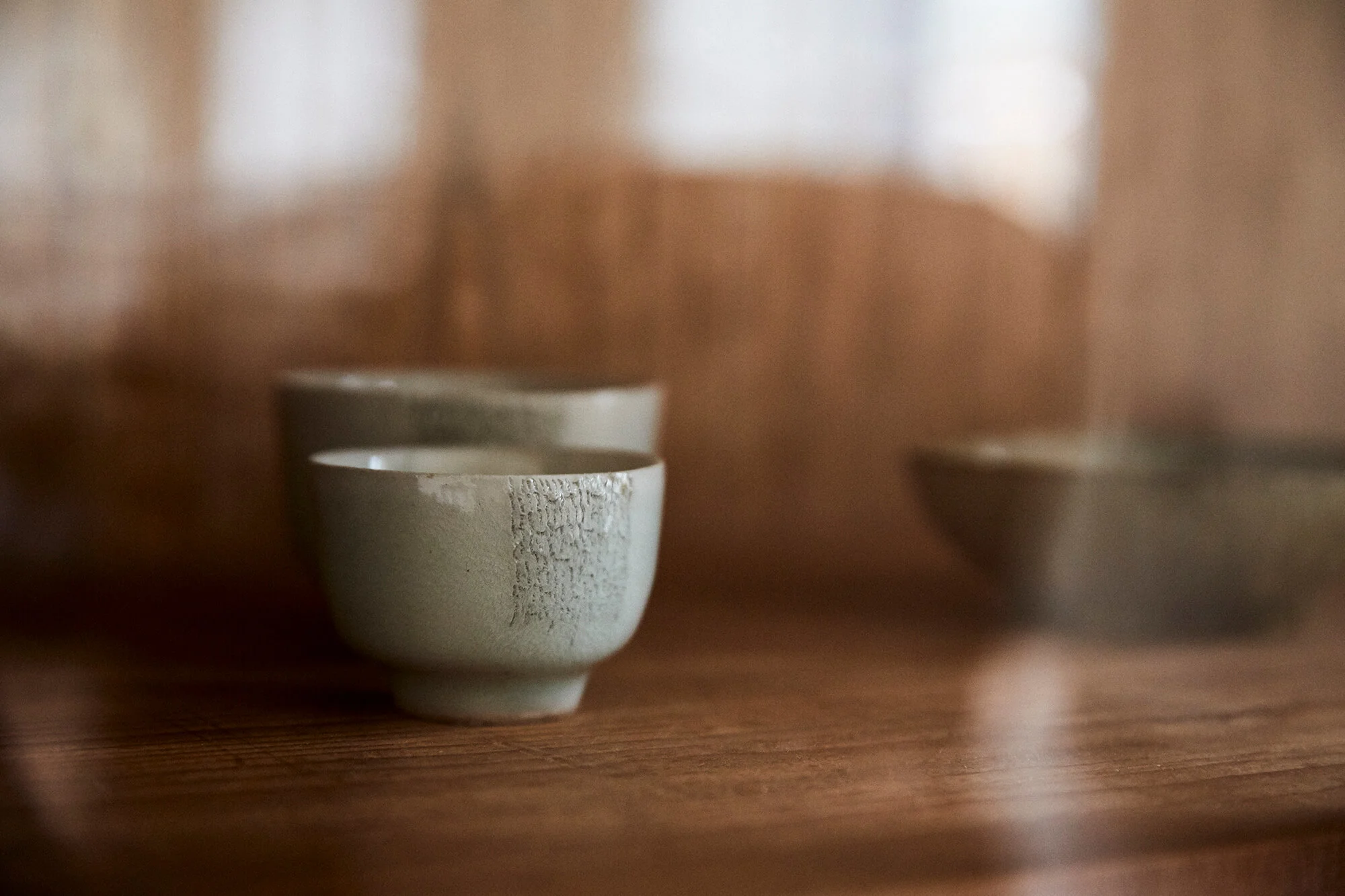
Do collectors just wake up one day and decide to begin collecting something? Or does a collection build up naturally over time like flowers in a garden, or memories in a mind? Like many collectors, writer and cook Nigel Slater didn’t realise he was a ceramics enthusiast until it was too late. Now he shares his home with hundreds of ceramic objects which accompany him through his personal and professional life, and who he speaks of as warmly as if they were old friends.
Liv Siddall goes round to Nigel’s house to have a look at his growing collection of pots, plates, bowls, cups and everything in between.
Most of us, whether we care to admit it or not, have a favorite mug. The one that can prompt eye-narrowing disdain for a colleague innocently using it on a Tuesday afternoon, or can trigger a pang of longing for if you realise it’s mid dishwasher-cycle when you need it. Their subjective, idiosyncratic appeal lies in their contrary characteristics: a mug should be delicate but sturdy, a thing of beauty without being fussy. It should be as robust as it is durable, but also precious. Homely, but fancy. It will come as no surprise to any reader familiar with the work of Nigel Slater, that the mug game in his home is very, very strong.
In fact, the steaming coffee handed to me in his kitchen was housed in a vessel so functional and well-designed that it seemed like I’d been using it my whole life. It was a salt-glazed mug designed by one of Nigel’s favorite potters, Steve Harrison. A curious object that would have looked equally at home on the kitchen table in Bilbo Baggins’ cottage as it would in a cabinet at the Palace of Versailles. “These are really things of great joy for me,” said Nigel. “I’ve got three of them. And there’s my weekend mug, which is that one over there.”
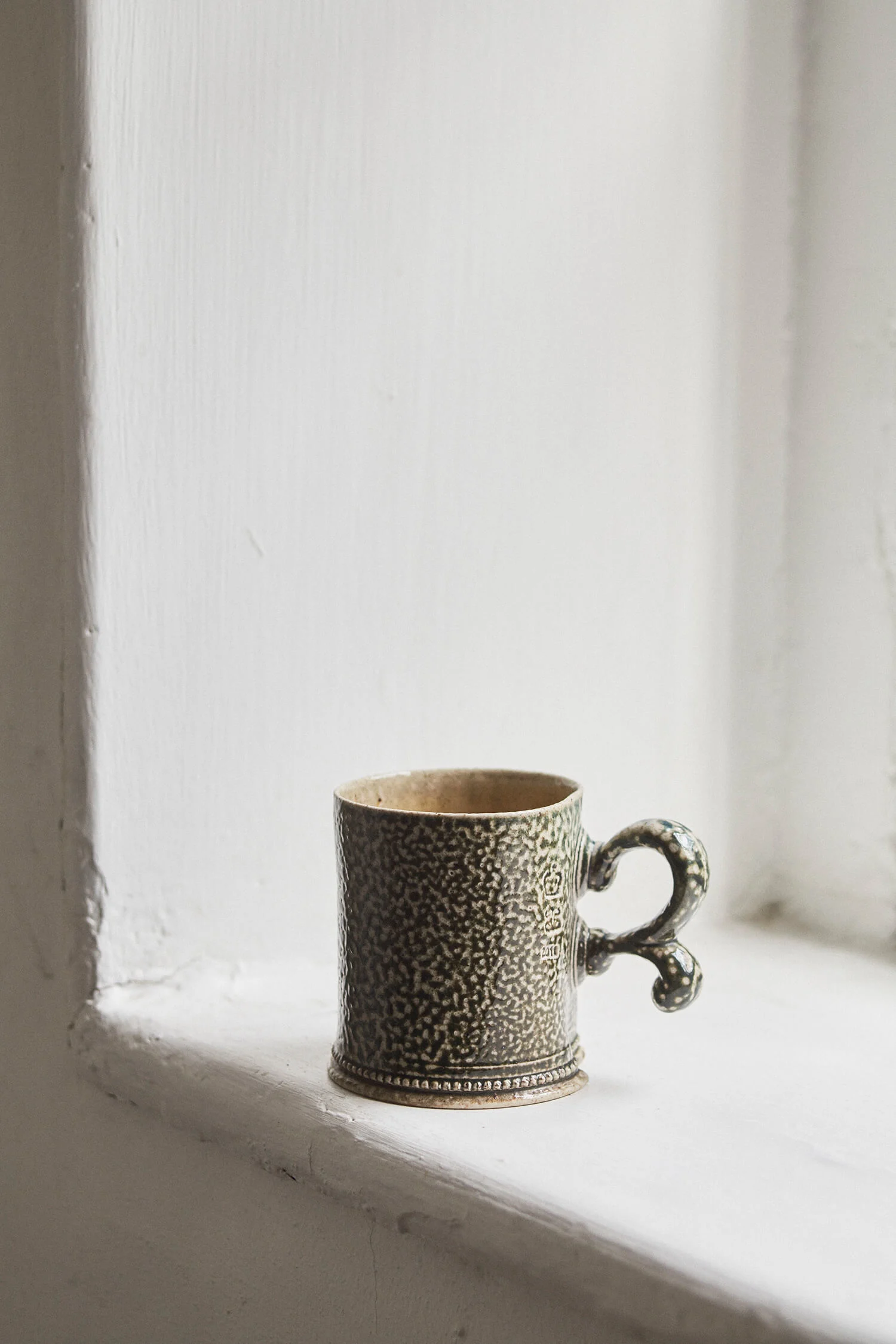
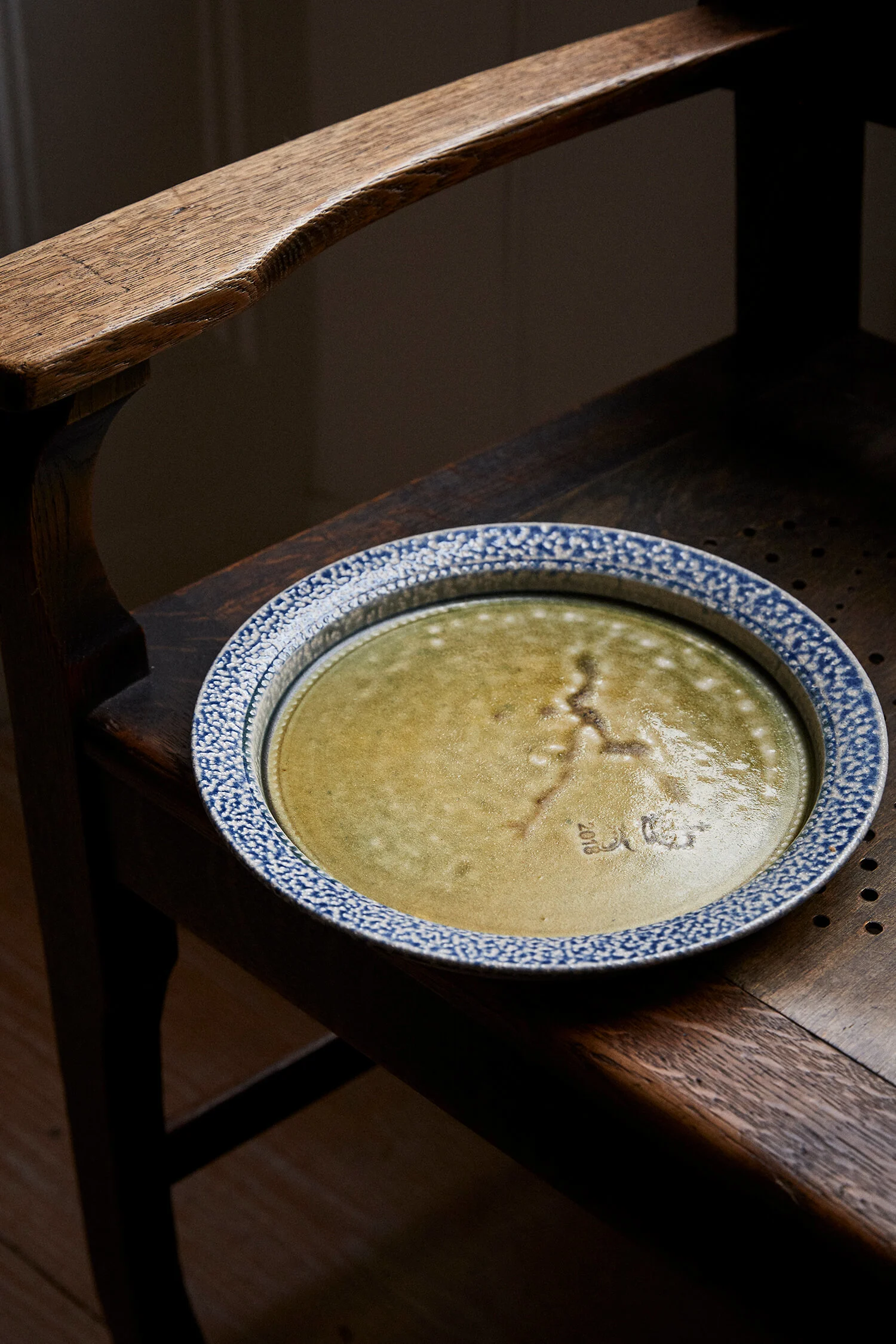
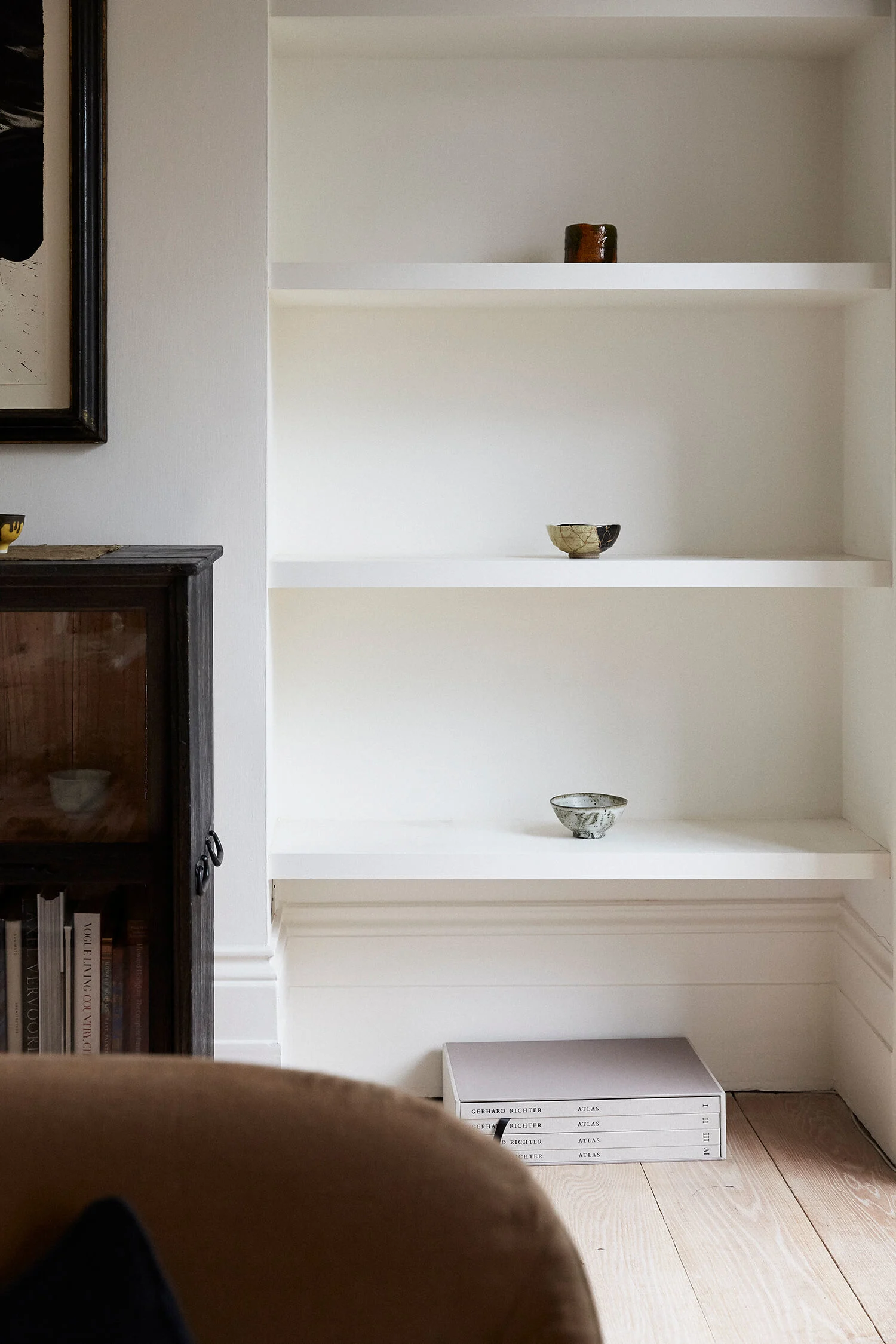
I like to feel that somewhere on that piece of work, the potter has left their mark.
Nigel, who is known worldwide for his cooking and food writing, is big into ceramics, a world not unlike the culinary one he resides in. Just as all humans begin life in the womb, all ceramics – even priceless Ming vases, Moorcrofts and Clarice Cliffs – begin life as hulking, grubby bags or clods of clay. Slippery, staining, deeply-scented mud taken from the earth below our feet. The same natural larder from which we get a lot of our vegetables. The clay is moulded, sliced, kneaded, caressed and put into an oven. Later, it is retrieved via the opening of a heavy oven door and the suspenseful reveal of the results of a complete heat-induced transformation. “And that's exactly like cooking,” Nigel says. “There's only so much that you're in control of. Some of it is up to the will of the pot or the oven. You can make the same recipes over and over again and it's different every time. I know from talking to potters that it's the same with pots. They don't quite know what's going to happen in that kiln.”

Nigel’s relationship with the earth has been communicated to his ever-growing hoards of ardent readers for decades. Via his treasured books and his famed Observer column he urges us to adjust the way we eat and, in turn, live, according to the seasons changing with the slow turn of our world. In his 2005 bestseller The Kitchen Diaries, he writes: “Learning to eat with the ebb and flow of the seasons is the single thing that has made my eating more enjoyable…I worry that today it is all too easy to lose sight of food’s natural timing and, worse, to miss it when it is at its sublime best. Hence my attempt at writing a book about rebuilding a cook’s relationship with nature.”
His feelings towards working in tandem with the earth are also present in his predilection for ceramics. His long-standing interest in vessels has culminated into a now quite extraordinary collection which amassed slowly over time and – as is perhaps the case with many collector’s collections – caught Nigel slightly off guard.
“This was accidental,” he said, standing in his now-ex laundry, gesturing to over 100 plates, bowls and vessels. “I just suddenly realized I was developing an interest that was beyond purely functional.”
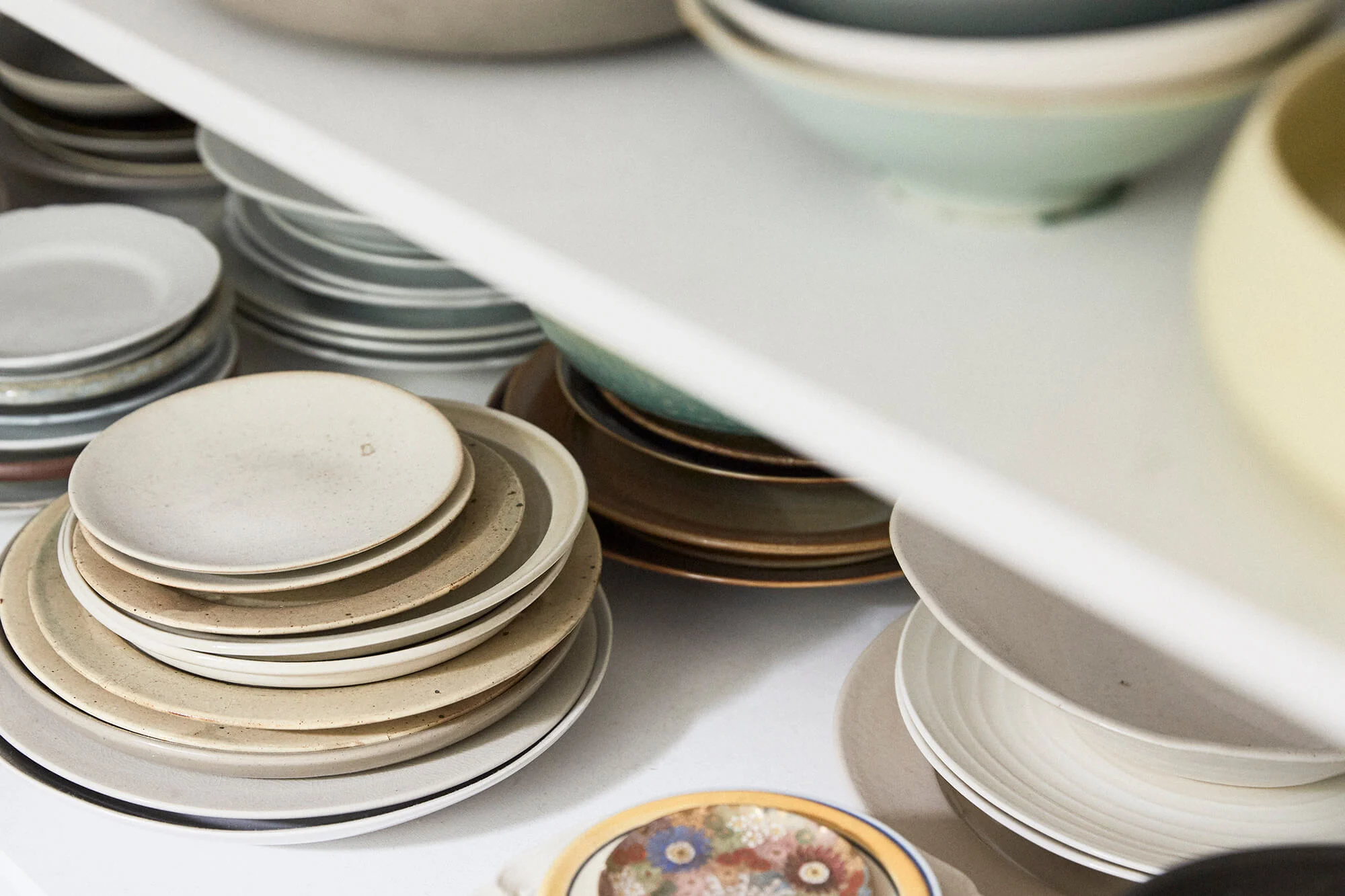
The plates and bowls in this room have starred in the photographs accompanying Nigel’s writing for years. You find yourself recognising some of them from his books as if they are movie extras (was that the bowl the aubergine and chickpeas recipe was served in in EAT? I swear that plate cropped up in The Christmas Chronicles…) In The Kitchen Diaries Nigel writes: “The pictures are taken at home...they are things that I have come to love and cherish. Whether it is a vegetable peeler or a palette knife, it works for me and has become part of my life.”

He really means that. The vessels that have not been lost to his unforgiving flagstone kitchen floor are still used daily. Not saved just for photoshoots or “for best,” but enjoyed. They are as much props for his personal routine as they are for his professional life. “I don't mind decorative stuff. It's fine. It's just I quite like it to have a use,” he shrugs. “I've got some cups that were made in the ‘40s and ‘50s that I bought at auction and I still use them.” He firmly believes in utility and the honoring of craftspeople by practicing it. “You don't make a cup and saucer to sit on a shelf, particularly if it's something that you know a potter made to be used every day,” he says. “It probably never occurred to them, I would imagine, that in 50 years' time it was going to be selling at Christie's. I like to honor that work and the spirit they were made in, so, yes, I do have my cereal in a bowl I probably shouldn't…”
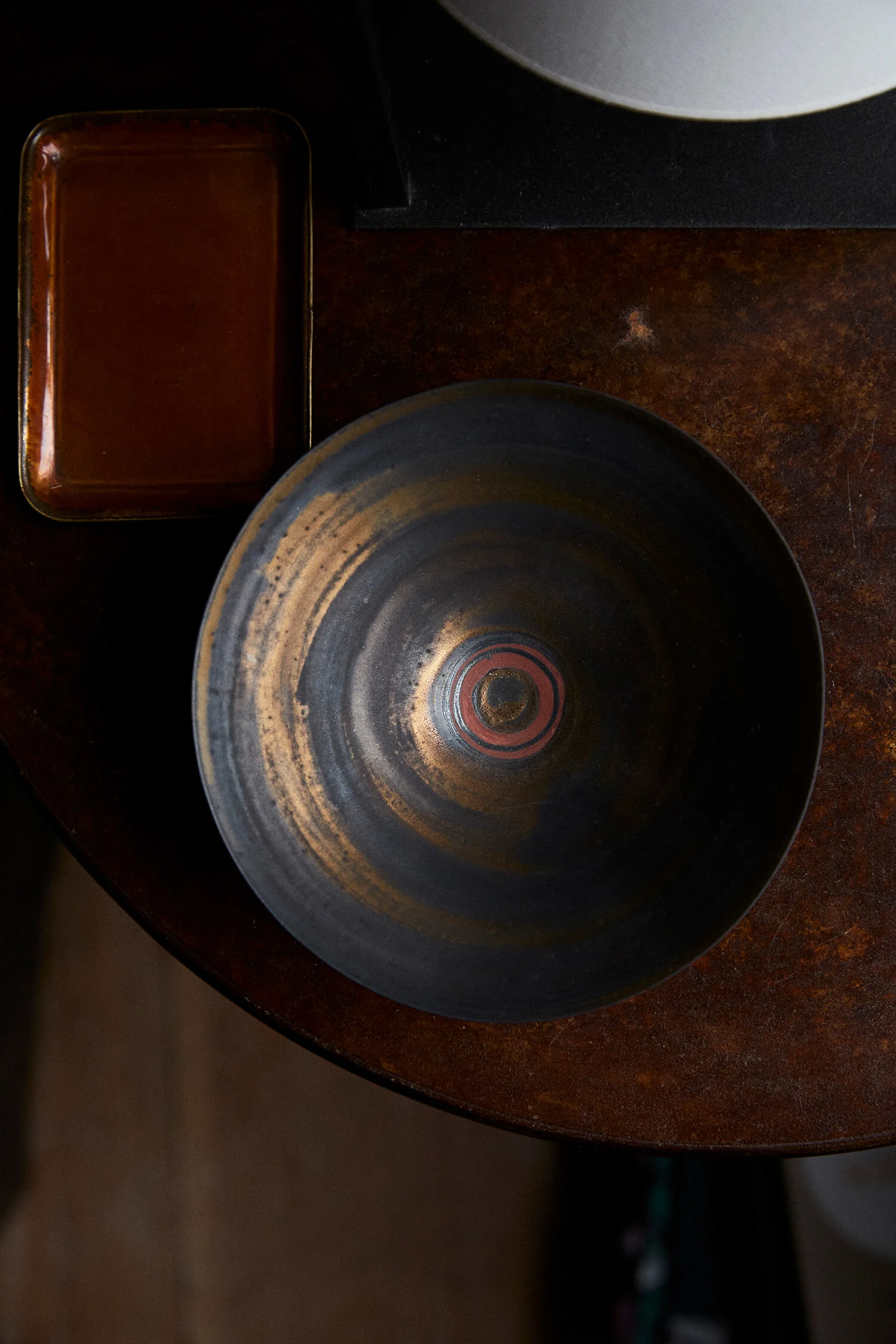
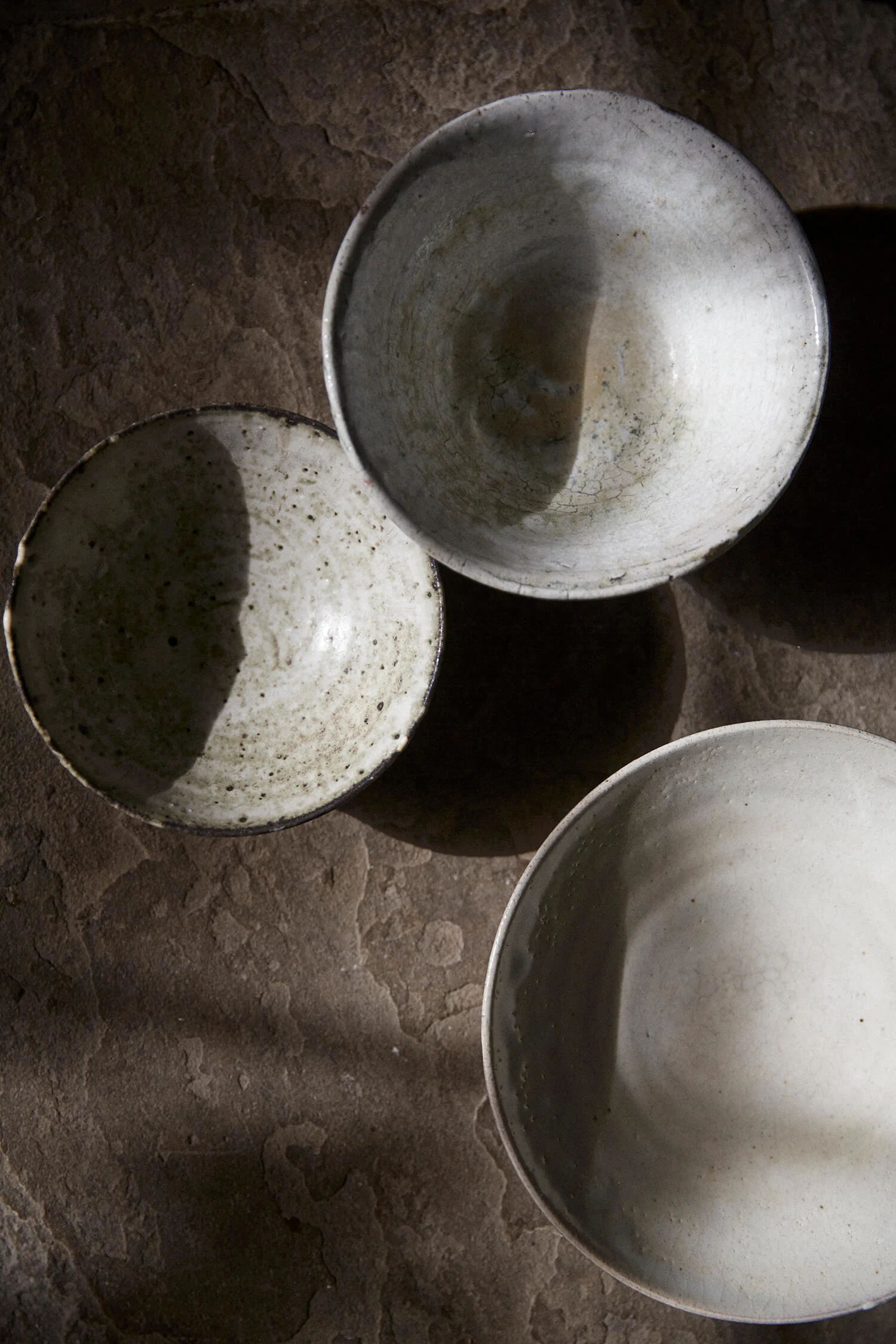
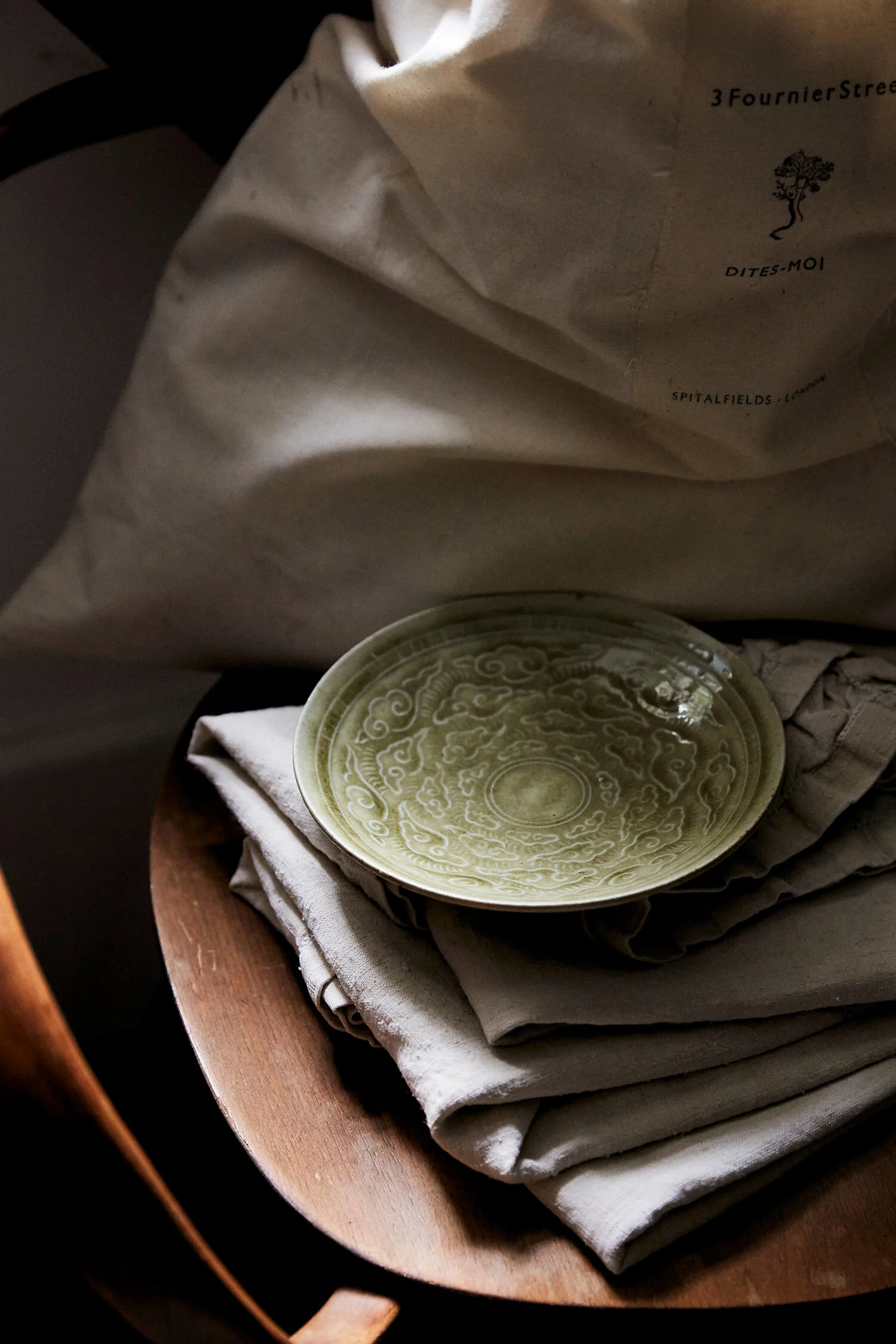
At the beginning of Nigel’s career in the 1980s he did a stint in styling food for photography. It was the era of starched napkins and (shudder) square plates. “It really was a problem. Food is difficult on a square plate, sushi's allowed but nothing else,” he confirms, gravely. “If I look back to some of my early stuff I now slightly twitch when I see it because it was over-thought.” Since then, Nigel’s preferred neutral tones. “I prefer when colors are matte, or when they're a little bit off being pure white. Some very classical French recipes look perfect on the simple white plate they were meant to be on, but at other times a plate that is a particular shape or has a particular texture to it, or is maybe quite rough to the touch or has some little speckles in the glaze can just gently work very well,” he says. “If you think about it too hard, it doesn't work. It looks contrived. It looks a bit precious.”
With a near-infinite combination of ingredients at his disposal and a laundry filled with crockery amassed over a lifetime, how on earth does he work out what goes with what? “Sometimes I'll suddenly have something ready on the stove and my photographer will say, ‘okay, are we ready?’ and I quickly put something together and it works. Sometimes I know exactly the plate or the bowl for that particular thing, because I just feel the food looks comfortable on it.”
You can make the same recipes you know over and over again, and it’s different every time. I know from talking to potters, it's the same with pots.
“Nigel has always been sensitive to how his food will appear in the photographs, and his choice of ceramics, vessels and objects are a natural extension of this,” says Jonathan Lovekin, Nigel’s trusted photographer who has been taking portraits of his freshly-cooked meals for years. His images are the perfect accompaniment to Nigel’s writing: warm, understated, and reminiscent of the feel of Sunday afternoons or the smell of seasons. “The photography has always been made at Nigel’s home, it picks up on the natural rhythms of his domestic space. We’ve always intended to evoke this sense of time and place, nearness and intimacy. Revealing the gentle texture of stoneware, or the shine on a glazed bowl, for example, is a tactile sensorial world as important as the qualities of the food itself.”

He mentions how, over the years, Nigel’s collection has grown, giving them both more options of what to work with. This is mainly due to Nigel’s annual pilgrimage to Japan, during which he pops into his favorite ceramics shops to place orders (“when they say they'll ship, I'm the happiest guy alive!”) and pays visits to The Museum of Oriental Ceramics in Osaka. He loves Japanese ceramics for “the sheer wobbliness of them and the fact that they're imperfect.” Nigel also keeps up with a handful of ceramicists on Instagram who he will order pieces from. He is enticed and excited by the human hand that makes the objects. In his laundry, he pointed out plates and bowls that clearly displayed the maker’s mark: the swoosh of glaze that still looked freshly daubed from the bristles of the brush, or the hand-fastened joining of two pieces of clay revealing traces of the slip used to bind them together. “I like to feel that somewhere on that piece of work, the potter has left their mark...not necessarily a thumbprint, but it will be something that is definitely there. It's a piece of handiwork. It might be that it's a very uneven plate that has obviously been made by hand and they've put their craftsmanship into it. That's really, really important to me. Pieces I love are very often the wobbliest.”
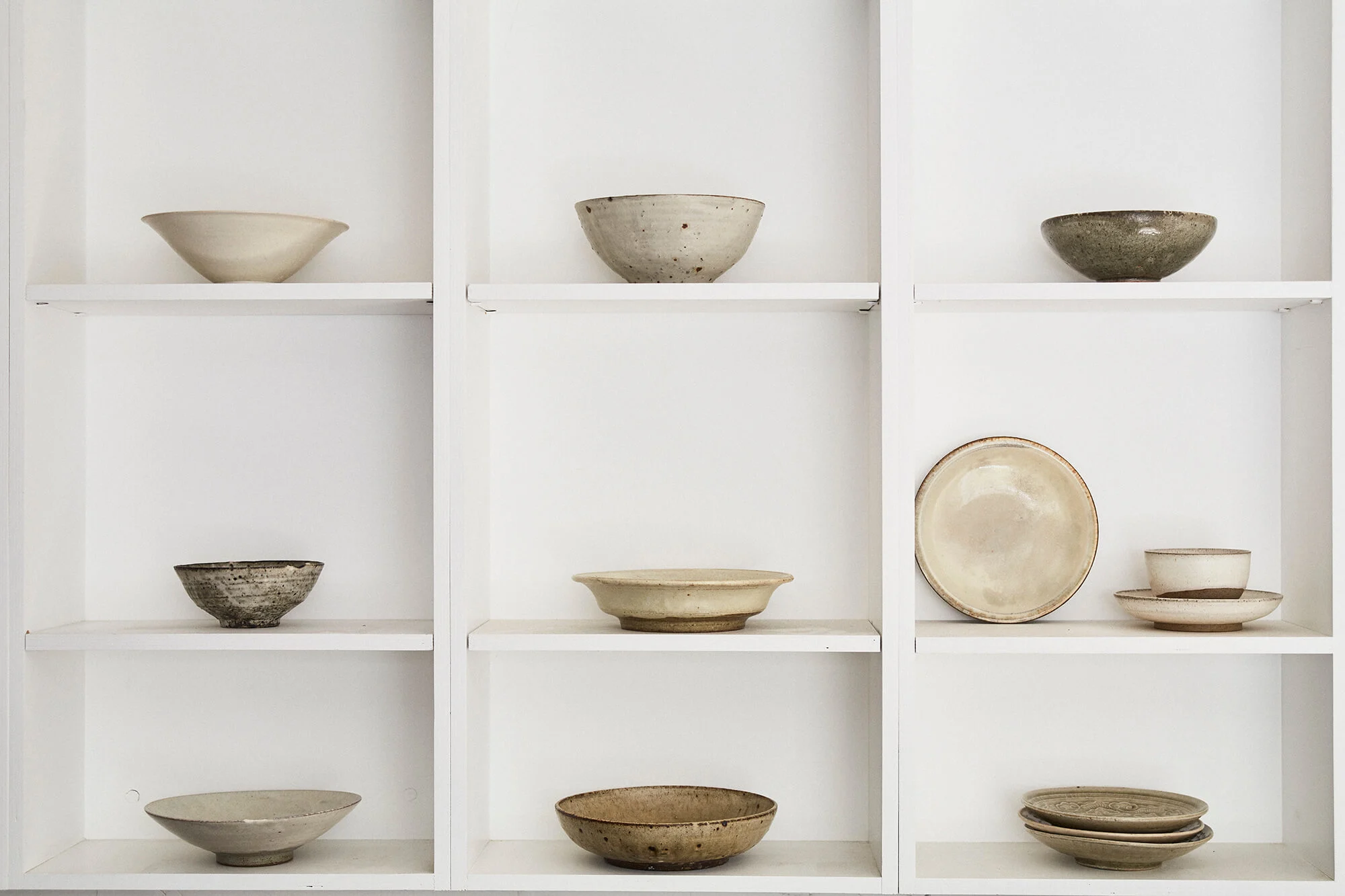
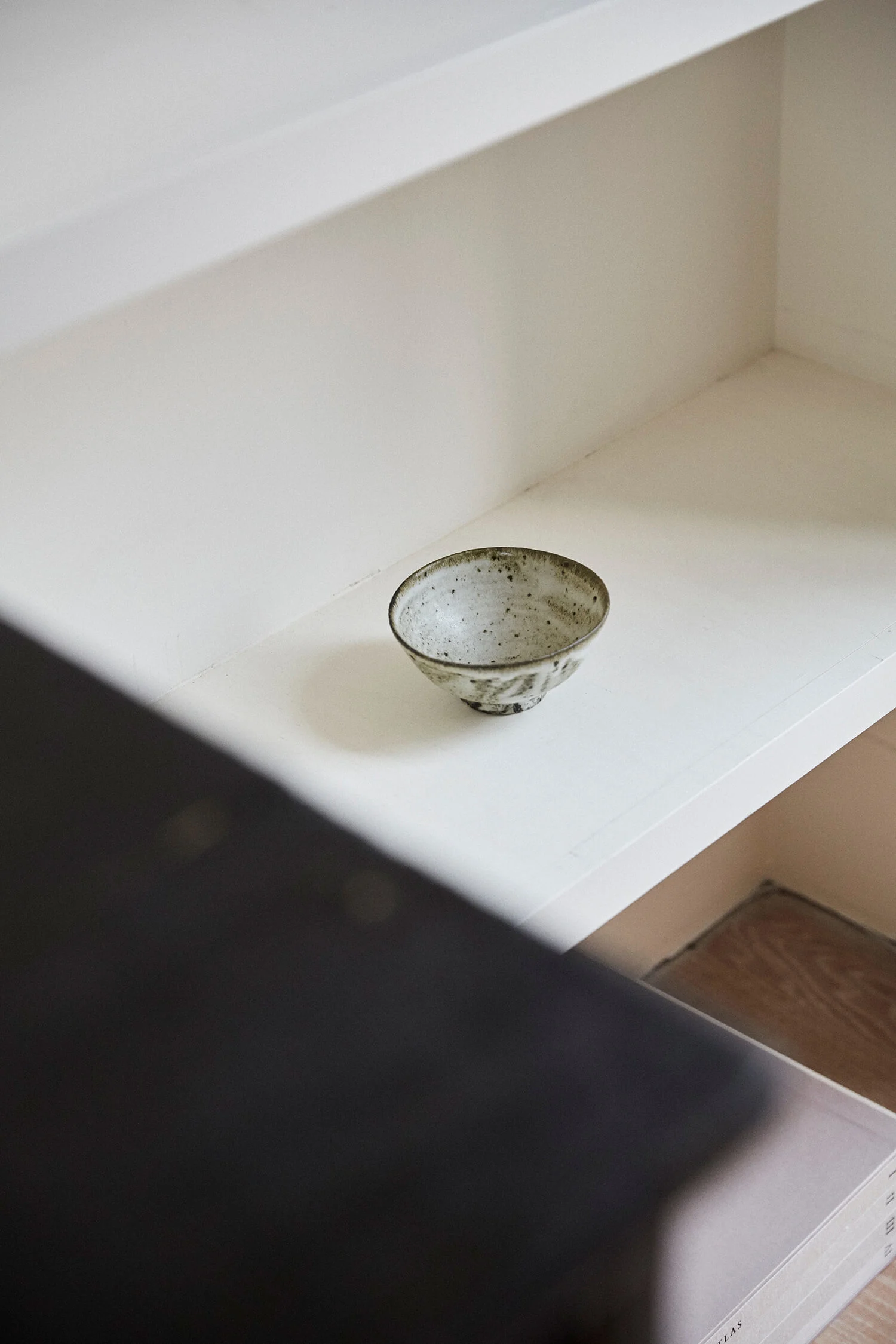
Back in Nigel’s laundry-cum-prop-room, he carefully picks up pieces and examines them gently as if they were sleeping animals. “...That's a very simple plate made by a young potter called Jono Smart,” he says, turning it over. “What I love about it is the fact that you've got this quite smooth surface to put the food on. When you pick it up, it's got a real texture.” He picks up another by Turkish potter Hüseyin Artik. “What I love about this is the fact that it isn't a white, more of a slightly sort of eggshell blue, slightly gray. But then you've got this lovely tactile raw clay on the bottom when you hold it...” He picks up another, rougher vessel and explains it’s by Anne Mette Hjortshøj, a ceramicist he met who “works with local clay from where she is on the coast in Denmark,” and now sends her pieces directly to him via her gallery in the north of England.
He seems easily seduced by texture. In his 1992 book Real Fast Food he writes: “I find something intrinsically ‘right’ about eating food while holding it in my hands. It is as if this is how food was meant to be eaten all along, with knives, forks and chopsticks being part of a parlour game that somehow got out of hand. I certainly enjoy the feel of food in my fingers and no doubt aspire to the primitiveness of it all.” In his home, watching him upturn bowls to reveal the grainy underside, the parts of the bowl that hot soup would communicate warmth through to your palms when cradling it, confirms how multisensory his relationship with food still is – echoing the “primitiveness” he mentioned so long ago.

Nigel lifts a shallow bowl from a stack. What would he put in there? I ask. He thinks hard for a few seconds and responds with a painterly answer. “It would calm down something that's quite bright...a very green soup or something...I probably wouldn't put meat or anything brown on it. I don't know why, I just wouldn't. But any sort of vegetable thing would look fabulous…” He’s clear to point out that he doesn’t buy pieces deliberately because he knows a certain recipe will look good placed upon it, but that it can be a little thrilling to take a piece home and experiment with pairing it up with food. “I've got the odd rather lovely plate that has never worked, no matter what I put on it. But I keep on trying,” he confesses. “I've got some gorgeous dark green soup bowls which I’ve given away because whatever I put in them, it just didn't work. I tried over and over again. You get the occasional piece that seems to drain the life out of the food. Generally, the food will always come first.”
Sometimes I know exactly the plate I’m going to use, because I just feel the food looks comfortable on it.
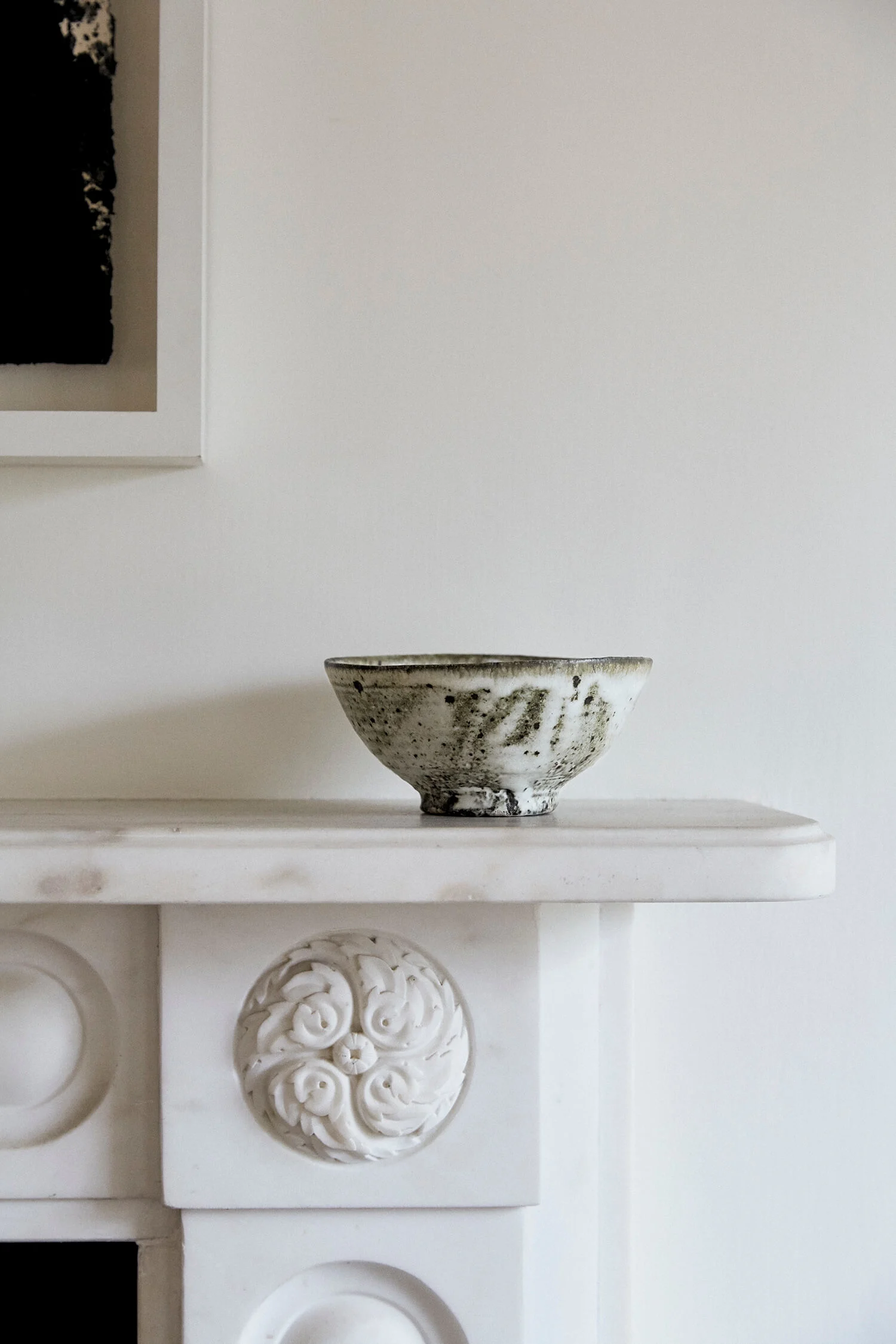
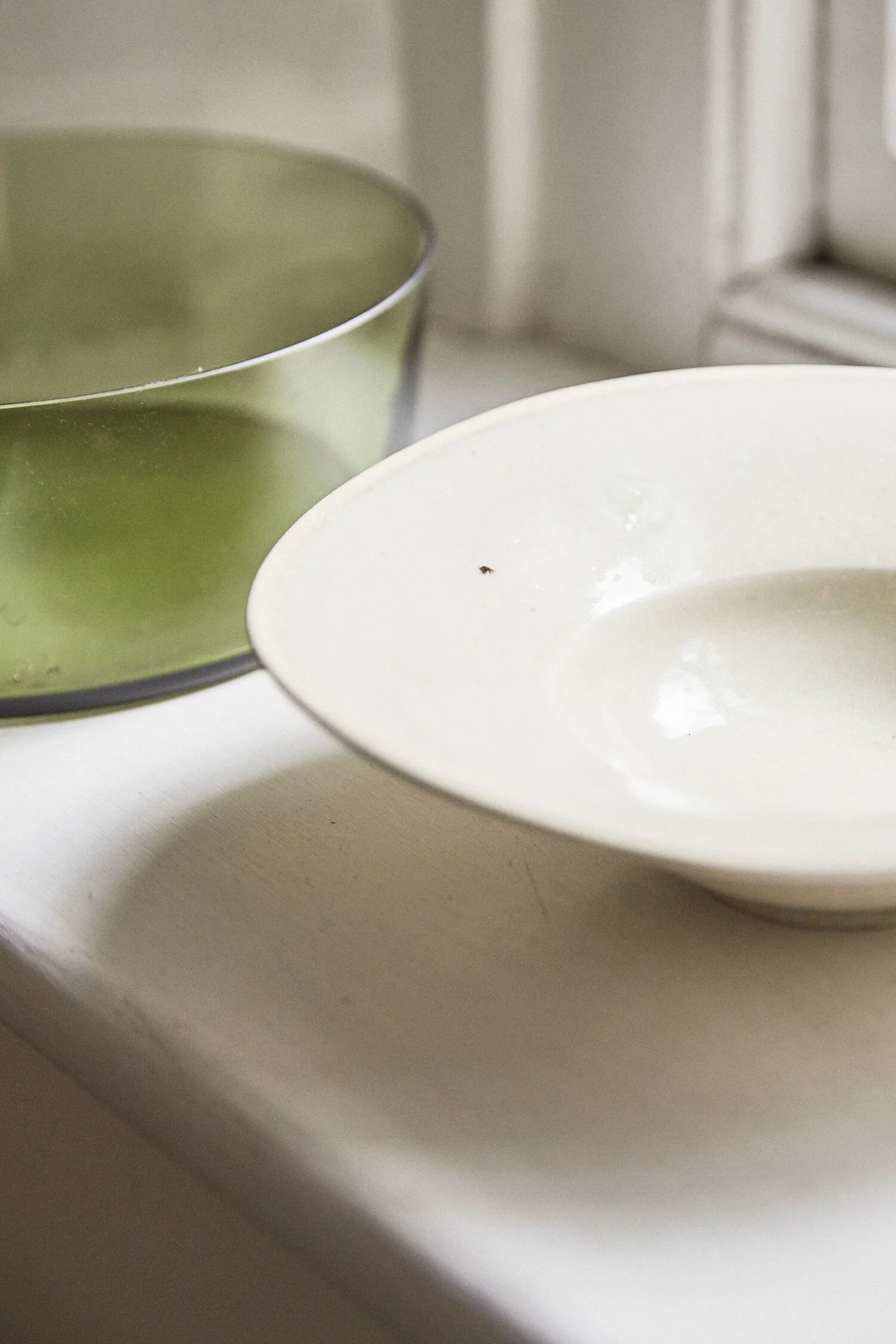
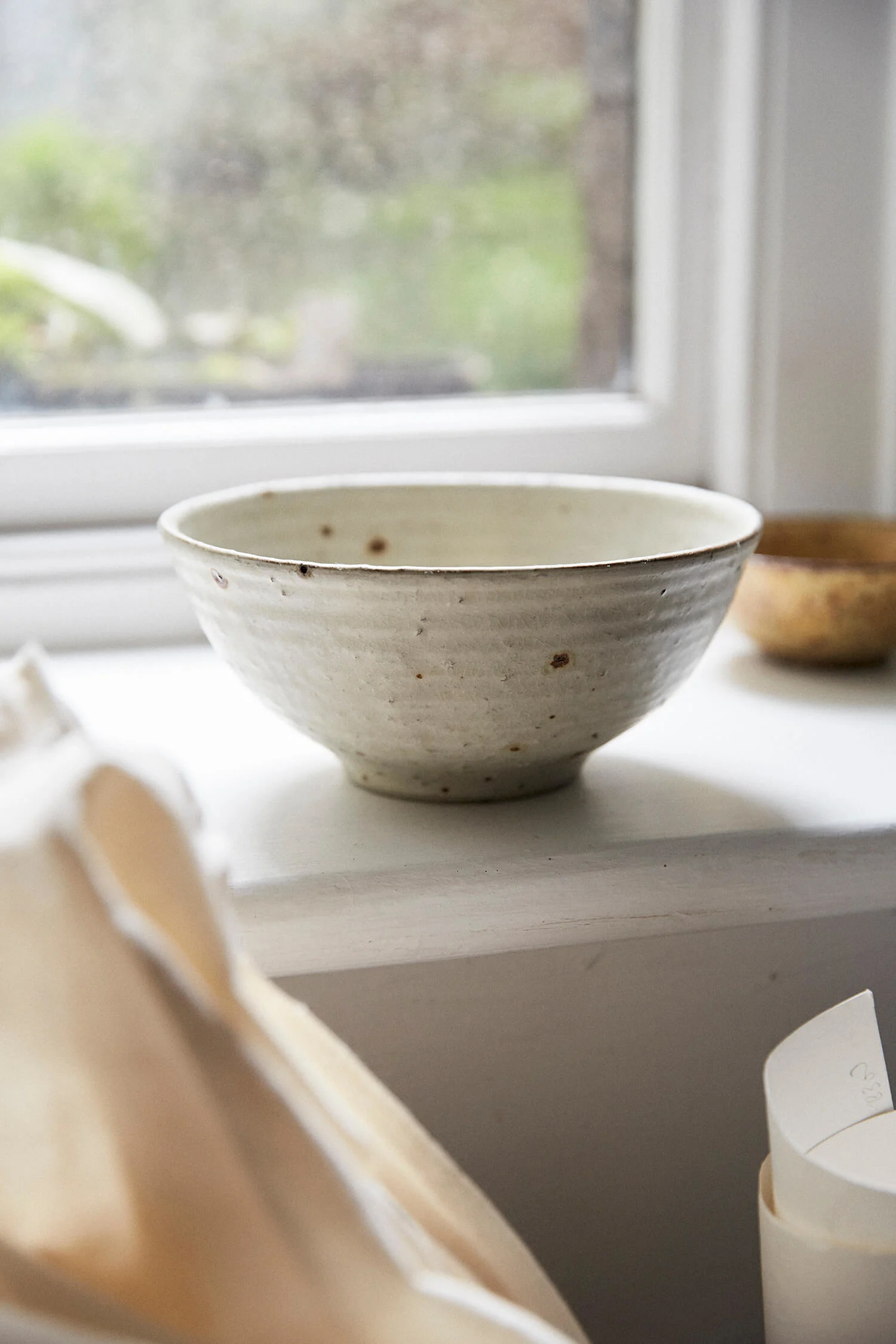
His collection isn’t confined to the room by the kitchen. Up the sturdy stairs that wind through the old house he leads me into a bright drawing room filled with natural light and a handful of well-chosen items that despite being muted and minimal, make it feel extremely cosy. A couple of pinecones litter the functioning hearth and the deep, off-white sofas look luxurious, but also reassuringly like a lot of friends have come over and sat on them. Spotted around the room are his more ornamental pieces. These are the ceramics, he explained as if he was confessing something naughty, that he tends to acquire through auctions, over the phone. Something he impishly refers to as being “very grown up.”
Some of his most treasured pieces are by Lucy Rie, the late Austrian potter who lived a rather extraordinary life, forging a now-famous career in mid-century Britain. “Lucy was one of the original craft potters, one of the studio potters, whose work has become very sought-after,” Nigel explains. He’s very fond of her work, and has collected a couple of items of varying sizes. Buying them is competitive; there’s only so much of it, and it’s incredibly in-demand. “I don't know what she'd make of it really,” he shrugs, “if she could have seen into the future and seen her stuff going for ridiculous amounts of money.”

Much like when you see one ant on the ground, and your eyes gradually adjust to reveal hundreds more of them, I became aware of the slow materialisation of other beautiful ceramics placed carefully in Nigel’s large drawing room. In a corner, balanced perfectly on a delicate table and held in place with museum wax, is an exquisite, tulip-like Jennifer Lee creation. Nearby is a piece by Greenwich-based potter Lisa Hammond who trained in Japan and whose studio he has visited. He likes potter’s studios. In a way, it’s as delightful as visiting a cook’s kitchen. “It's the smell of the studio, that slightly damp, dusty smell, but also the fact that it's a place of pure creativity,” Nigel explains, “and most of the potters I know are quite energetic people. They're not, as I'd imagine, these entirely serene human beings from another world. They're actually full of energy. They're often quite effervescent. It's so odd that's how they are because I think of them as being completely different.”

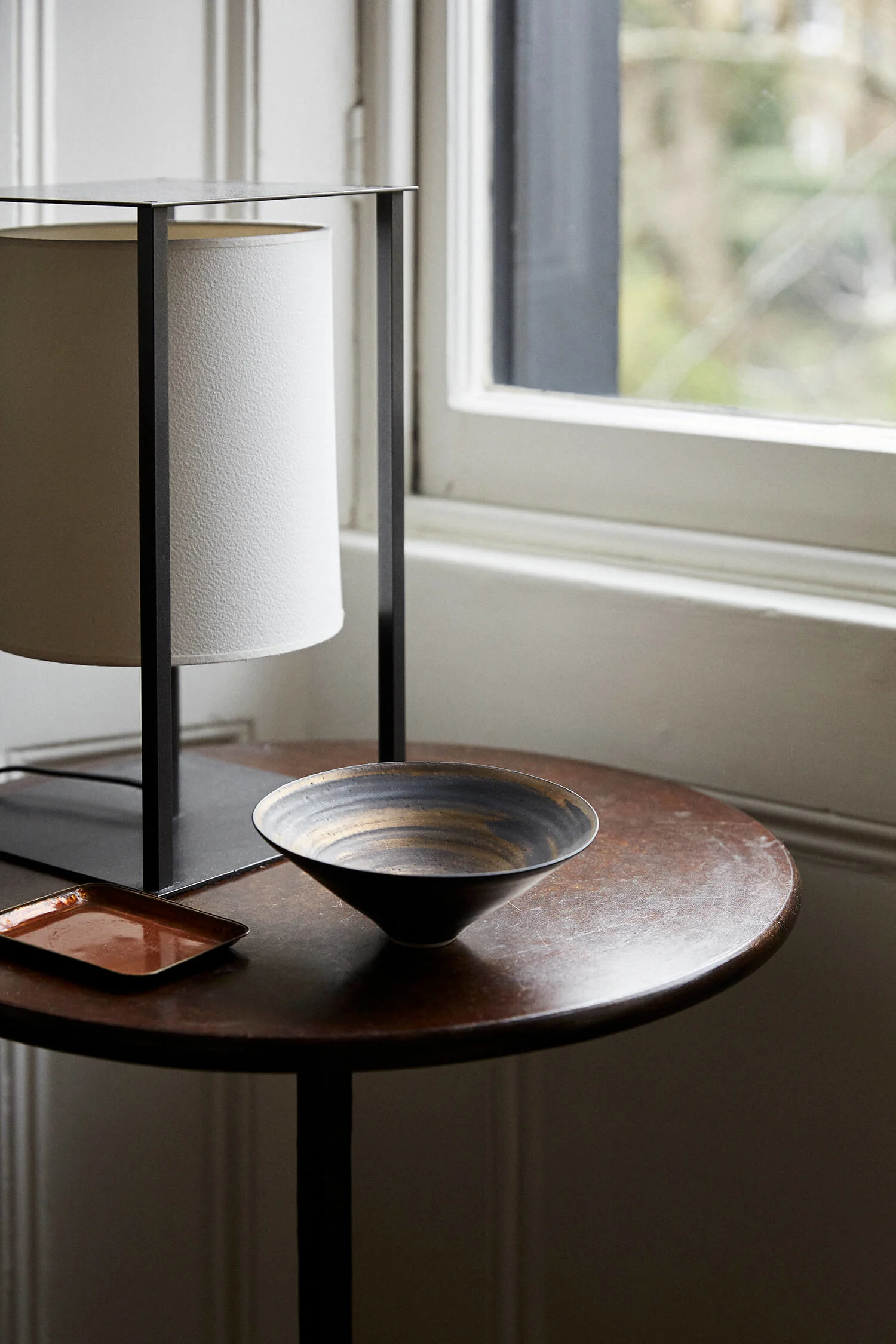
“I didn't think that ceramics was my world really,” says Nigel as we descend the stairs back to the kitchen, “but it has become so important to me.” For someone who admits he has never bought a proper set of china, and who tried his hand at throwing but didn’t take to it, he’s surrounded himself with a fascinating, personal, functional set of his own.
To try to write about such a good writer is daunting. It also feels crude: like drawing a portrait of David Hockney on a cardboard box with a biro. Just as a potter can make sublime elegance from muddy lumps of clay, Nigel can conjure magic with plain old words or humble vegetables that, when arranged by him, come together in peaceful, enticing and reassuring simplicity. But it’s good to know someone like him has a personal obsession and has become a collector. We’re all susceptible to getting slightly obsessed with things.
“I never want to get too precious. I mean, there are people who think I'm precious enough as it is. I probably am,” he says. “But then again, people get precious about football and about goals and things: who scored what and who did what. So, I get precious about this. I don't think there’s anything wrong in putting something in front of somebody that just feels right...something that is a pleasure to hold.”

The coffee in the Steve Harrison mug is gone. We examine them again. It’s hard not to. “I think partly the thing about mugs is that with a plate, you don't really hold it, and I think that changes the geography of it,” Nigel says, sliding his fingers through the handle of his cup. “When you actually have something in your hand, you're feeling a mug. You want to feel it. You don't want it to be so thick that you can't feel the warmth of the coffee or whatever through it. You don't want it to be heavy. It's got to be just right. I reckon the people I know who probably really genuinely don't care what plate or bowl their food is served in, do care about their mug. ‘It's mine,’ or ‘oh, that's my mug.’ You know?”

